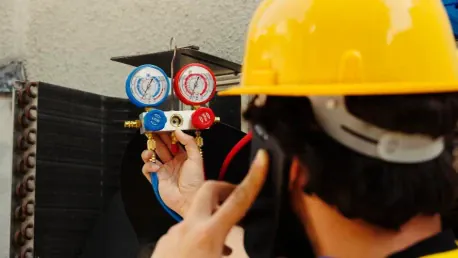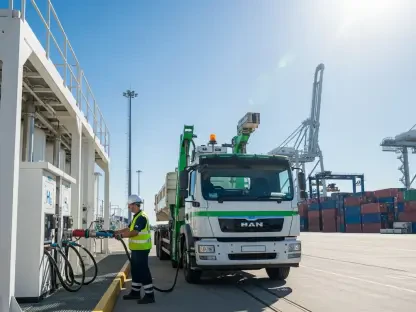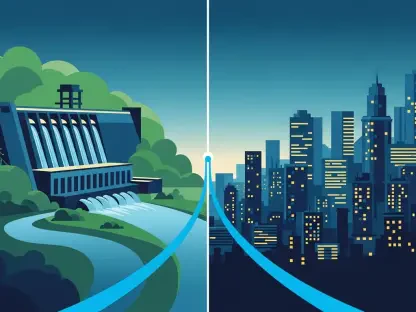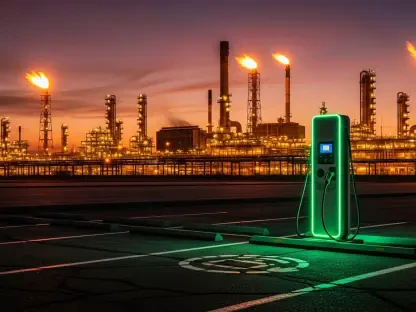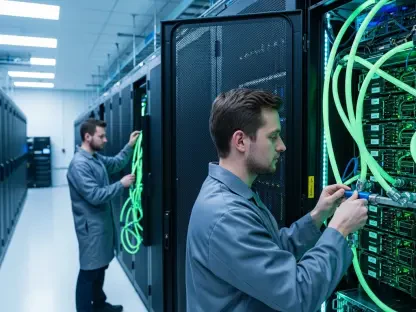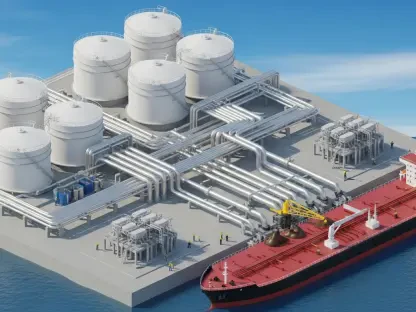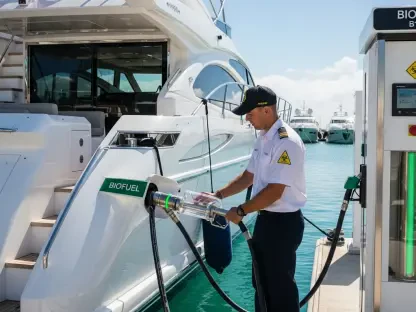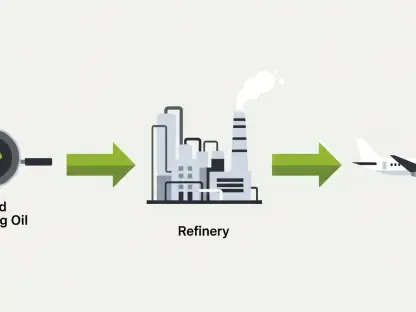Gas detection technology has significantly evolved over the years, particularly within the HVAC and refrigeration sectors. These systems are essential for maintaining comfortable and safe environments in a variety of buildings, but they are also prone to refrigerant gas leaks that can lead to numerous problems. Modern advancements in gas detection technology have addressed these issues more effectively than ever before, making it crucial for installers to stay informed about the latest developments.
Importance of Regular Leak Checks
The Invisible Danger of Refrigerant Gas Leaks
Refrigerant gas leaks in HVAC and refrigeration systems pose severe risks that go unnoticed without regular checks. Despite their perilous nature, these leaks are often invisible and undetectable until they reach critical levels. This delay in detection results not only in environmental harm but also in considerable financial costs. Studies reveal that leaks are typically identified only after 60% of the refrigerant gas has already escaped. This significant loss exacerbates energy inefficiency and increases operating costs as systems can lose around 20% of their refrigerant each year without detection. As a result, energy consumption can rise by roughly 33%, adding substantial financial strain, especially amid climbing energy prices.
Moreover, the health risks associated with refrigerant gas leaks are alarming. These gases, if inhaled in large quantities, can cause respiratory issues, dizziness, and other health problems for building occupants. Toxic refrigerants also have detrimental effects on the environment, contributing to global warming and ozone layer depletion. In industrial and commercial settings, undetected leaks can disrupt operations, lead to costly shutdowns, and necessitate expensive repairs. Thus, robust gas detection methods are indispensable for safeguarding both human health and the environment, as well as for minimizing financial burdens.
Regulatory Compliance and Inspections
Businesses operating HVAC and refrigeration systems must adhere to stringent F-gas regulations designed to minimize the environmental impact of refrigerant gases. These rules mandate frequent leak checks for systems with high CO2 equivalent tonnage, with required inspection intervals ranging from quarterly to annually. Compliance is not optional; systems with larger refrigerant capacities must even install gas leak detectors to ensure safety and regulatory adherence. The purpose of these inspections is to catch leaks early, thereby reducing the emission of harmful gases and ensuring the integrity and efficiency of the HVAC systems.
Failing to comply with these regulations can result in hefty fines and legal consequences. For businesses, the financial and reputational risks of non-compliance are severe, making regular checks and proper maintenance essential. Advanced gas detection technologies are integral in meeting these regulatory requirements. They allow for precise monitoring and timely identification of leaks, thus facilitating adherence to environmental laws. For installation professionals, understanding and implementing these technologies is critical. Staying up-to-date with regulatory changes and leveraging state-of-the-art detection systems can prevent non-compliance issues and enhance the overall safety and efficiency of HVAC installations.
Advancements in Gas Detection Technology
Intelligent Sensors for Accurate Detection
Modern gas detection technology has made leaps in precision and reliability, particularly through the development of intelligent sensors. These advanced systems utilize semiconductors or infrared sensing elements to detect both hazardous and non-hazardous gases with exceptional accuracy. Unlike older technologies, these sensors can pinpoint specific gas mixtures, allowing for customization in various environments such as cold storage facilities and industrial buildings. Their ability to filter out irrelevant gases also enhances their longevity and reduces the frequency of maintenance and recalibration, making them highly efficient tools for ongoing monitoring.
The integration of intelligent sensors into gas detection systems offers numerous benefits. These sensors often come equipped with sophisticated programming that can adapt to specific conditions, thereby improving their effectiveness. In environments with mixed gas compositions, the ability to discriminate between different gases is crucial for accurate readings. Furthermore, the durability of these sensors ensures long-term reliability, which is essential in critical applications where safety and efficiency are paramount. For installers, the adoption of intelligent sensor technology represents a significant improvement in the capabilities of gas detection systems.
Enhanced Safety Features and BMS Integration
Modern gas detectors are not limited to just detecting leaks; they also incorporate advanced safety features designed to provide immediate alerts and integrate seamlessly with Building Management Systems (BMS). These devices typically feature LEDs and audio-visual alarms that instantly notify occupants of any detected danger, thereby ensuring timely evacuation and response actions. Moreover, the integration with BMS allows for proactive online monitoring and diagnostics. This compatibility facilitates comprehensive management of HVAC systems, offering detailed data analysis and real-time monitoring to pinpoint issues before they escalate.
This fusion of gas detection technology with BMS significantly enhances the overall communication within the system, improving the efficiency and responsiveness of maintenance operations. Through the BMS, facility managers can gain a holistic view of the system’s performance, enabling them to make informed decisions and quickly address potential problems. This interconnected approach not only boosts safety but also promotes energy efficiency, as it allows for the identification and mitigation of energy-wasting leaks promptly. For installation professionals, mastering the integration of gas detectors with BMS is essential for providing high-quality, comprehensive solutions to clients.
Dual Benefits of Modern Gas Detection Technology
Enhancing Safety and Energy Efficiency
The implementation of advanced gas detection technology in HVAC and refrigeration systems offers dual benefits, primarily enhancing safety and ensuring energy efficiency. By accurately identifying and addressing refrigerant gas leaks, these systems protect building occupants from health hazards and reduce the environmental impact of harmful gases. Additionally, early detection and repair of leaks prevent energy waste, leading to substantial energy savings and long-term cost reductions. The financial benefits, coupled with compliance with regulatory standards, make modern gas detection technology an indispensable component of efficient HVAC management.
For building owners and operators, the adoption of these advanced systems translates into improved operational efficiency and reduced maintenance costs. By minimizing the risk of undetected leaks, businesses can avoid the disruptive and expensive consequences associated with significant refrigerant loss. Moreover, the enhanced reliability and precision of modern gas detectors ensure that leaks are identified and rectified promptly, maintaining the optimal performance of HVAC systems. This proactive approach to leak management not only supports sustainability goals but also promotes a safe and comfortable environment for building occupants.
The Role of Installers and Businesses
For installation professionals and businesses, the evolving gas detection technology landscape offers both challenges and opportunities. Staying abreast of the latest advancements and understanding their practical applications is crucial for delivering effective HVAC solutions. Installers must be knowledgeable about the different types of gas detection technologies available and their suitability for various environments. This expertise enables them to recommend and implement the most appropriate systems, ensuring that installations meet the highest standards of safety and efficiency.
Businesses, on the other hand, must recognize the value of investing in advanced gas detection technology. By prioritizing the integration of these systems into their HVAC and refrigeration units, they can safeguard against the risks associated with refrigerant leaks. This investment not only helps in complying with regulatory requirements but also enhances the operational efficiency and longevity of the systems. In the long run, the benefits of reduced energy consumption, lower maintenance costs, and improved safety far outweigh the initial investment, making advanced gas detection technology a wise and necessary choice for modern HVAC management.
Conclusion
Gas detection technology has come a long way, especially in the HVAC and refrigeration industries. These systems play a vital role in ensuring that buildings remain comfortable and safe. However, they are susceptible to refrigerant gas leaks, which can cause an array of complications. Modern advances in gas detection technology have significantly improved the capability to detect and address these leaks more efficiently and accurately than ever. It’s essential for installers and technicians to keep abreast of these technological advancements to ensure they can provide the best service possible.
Staying informed about the latest in gas detection ensures that professionals can maintain high safety standards and prevent potential hazards. New technologies not only help in identifying leaks swiftly but also assist in mitigating their impact before they become major issues. The importance of advanced gas detection systems in maintaining the functionality and safety of HVAC and refrigeration systems cannot be understated. With ongoing innovations in this field, there’s a continuous push towards creating safer, more efficient environments in various building types.
